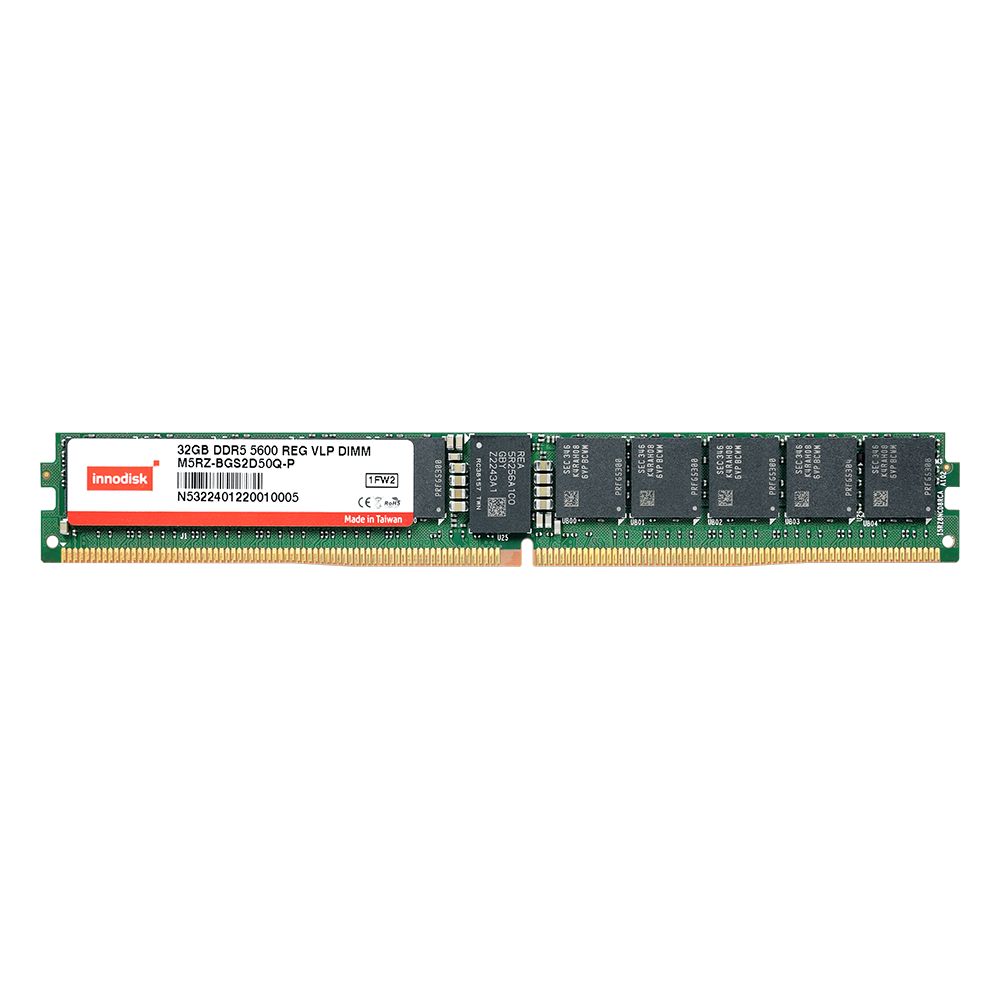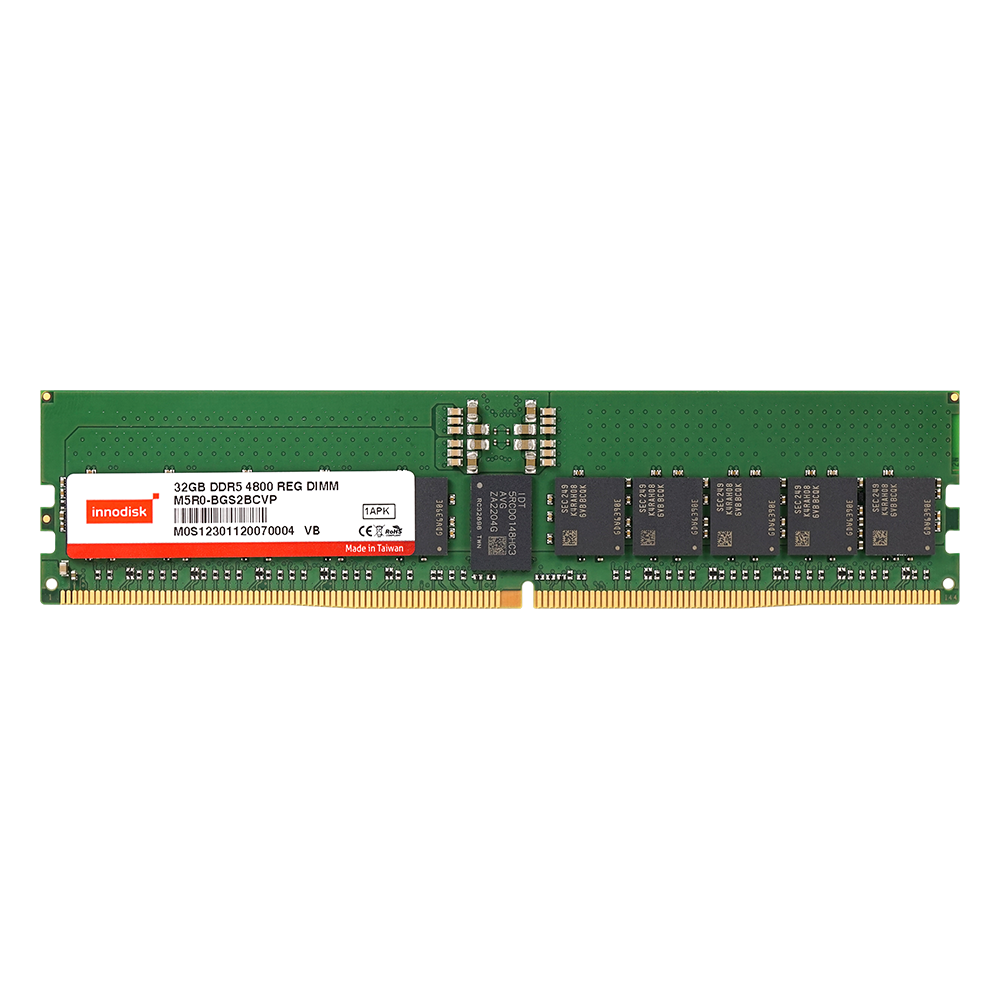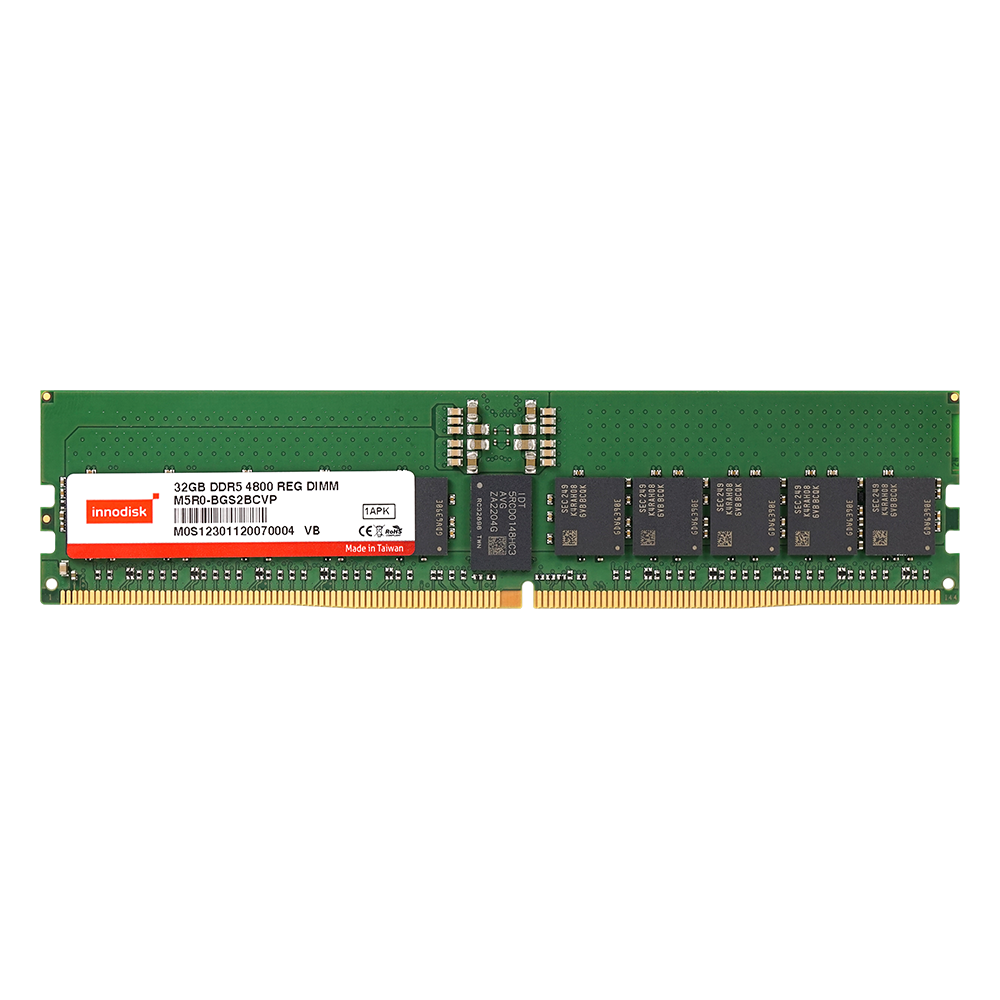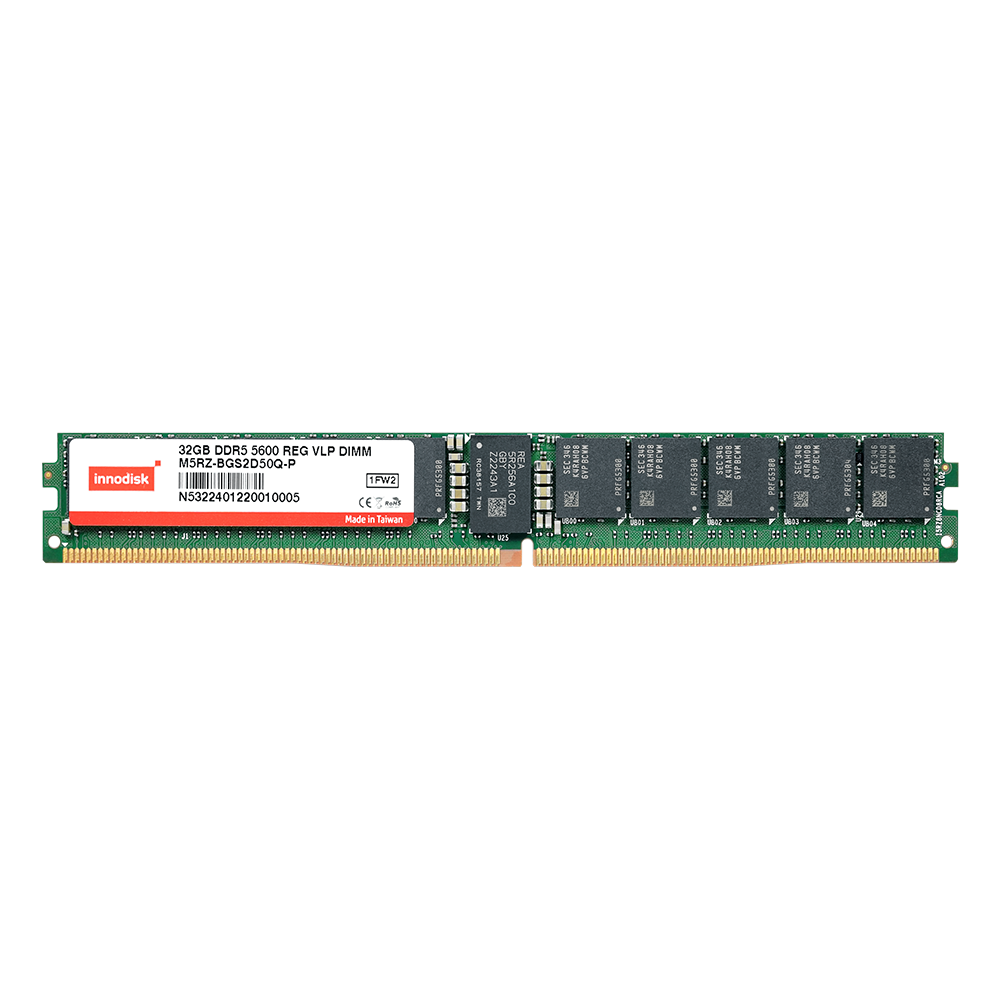
DDR5
Optimal Memory for 1U Server
DDR5 RDIMM VLP
Features
- Saves 40% of system space with VLP (Very Low Profile) design
- Speeds up to 5600MT/s with capacities up to 32GB
- HDI and Ultra Low Loss PCB minimize signal interference
- Identifies the optimal PMIC solution through Power Integrity (PI) testing
- Selects the ideal SPD hub through Signal Integrity (SI) testing
The DDR5 RDIMM VLP offers a very low-profile design and the industry‘s fastest memory speeds with 4800MT/s or 5600MT/s. It is fully compatible with the Intel® Purely platform and 1U devices. The modules are available in 16GB and 32GB capacities.
40% SPACE SAVING, COOLING BOOST AND SYSTEM FLEXIBILITY
The DDR5 RDIMM VLP, standing at just 1.8cm in height, achieves a 40% reduction in space usage. This low-profile design reduces PCB usage and decreases resource consumption. It also improves airflow, enhances memory cooling, conserves fan energy, and offers greater flexibility in system configuration.

ENHANCING SIGNAL INTEGRITY WITH INNOVATIVE PCB DESIGN
To combat signal interference on narrow PCBs when upgrading to 5600MT/s, Innodisk leverages Ultra Low Loss PCB and HDI (High-Density Interconnect) PCB layout design. This results in higher component density, smaller board size, more component layers, compact connections, and shorter signal transmission distances.
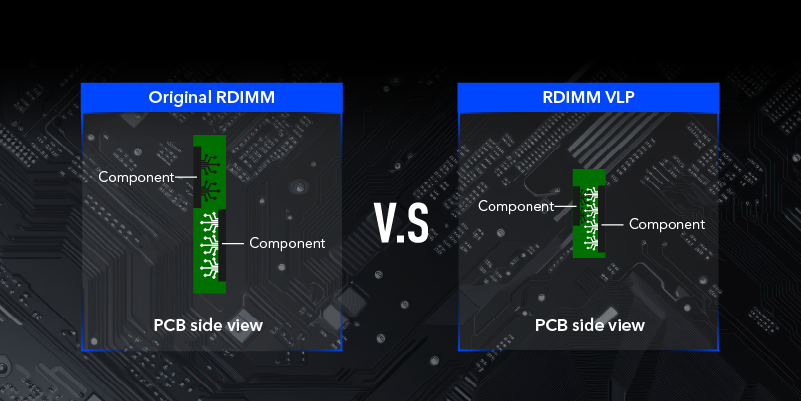
POWER INTEGRITY (PI) TESTING : ENSURING SIGNAL STABILITY
PMICs are crucial for power management in DRAM modules. During voltage conversion from 1.2V to 1.1V, fluctuations and electrical noise can potentially affect module performance and stability. Even JEDEC-compliant PMICs may perform differently across various motherboards and component combinations.
To assess power flow stability, Innodisk conducts power integrity testing on PMICs from multiple vendors. Stable power flow is vital for reliable signal transmission. As you can see in the figure below, the test revealed that Component B had lower output ripple noise compared to Component A. Lower ripple noise and voltage amplitude indicates better signal stability, making Component B a more reliable choice for maintaining DRAM module performance.
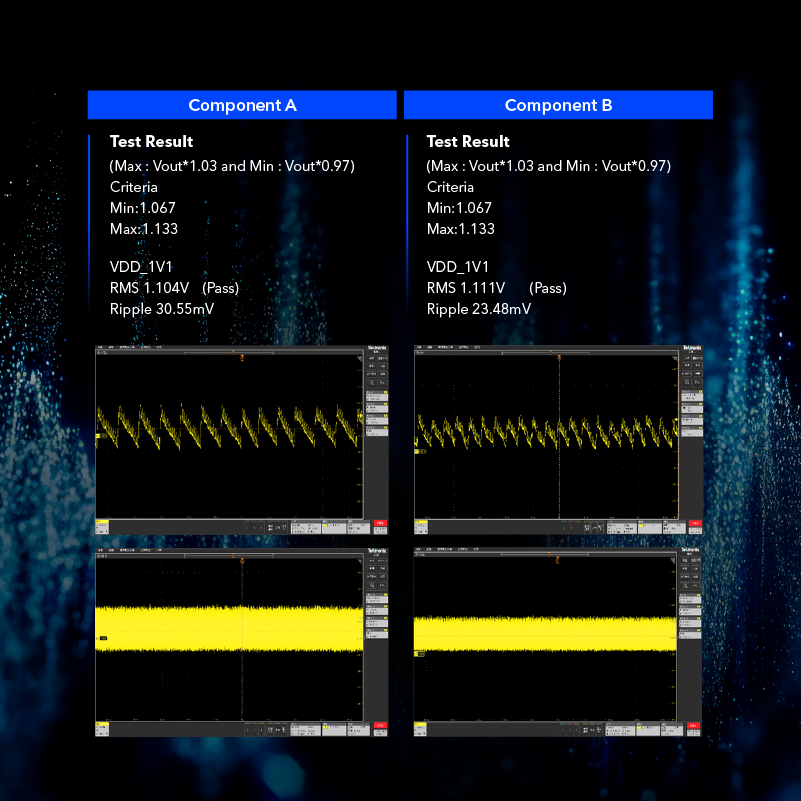
SIGNAL INTEGRITY (SI) TESTING: OPTIMIZING DATA TRANSMISSION RELIABILITY
Maintaining Signal Integrity is crucial in high-speed data transmission, as interference from transmission lines, DRAM ICs, PCBs, and other factors can disrupt signals. To ensure accurate data transmission, Innodisk uses an oscilloscope to measure I2C/I3C signals from the SPD Hub. Testing revealed that Component B occasionally delivers lower amplitude signals, which can lead to data inconsistencies.
In contrast, Component A maintains consistent timing and amplitude characteristics, which are essential for reliable data transmission and system operation. Therefore, using components that ensure stable signal integrity is vital for the smooth operation of memory modules.
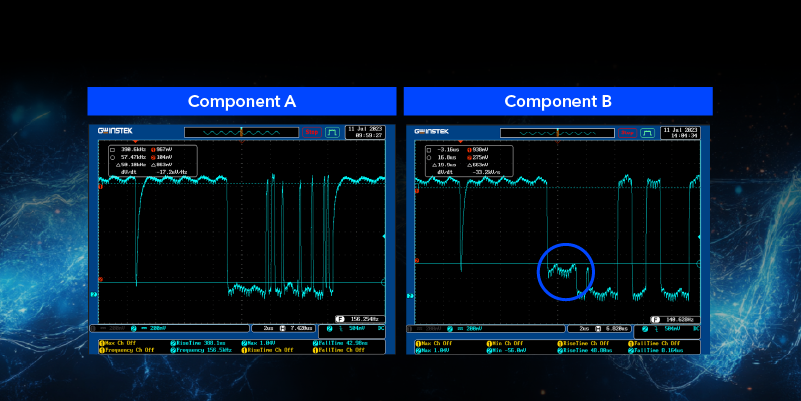
IMPLEMENTED WITH SUCCESS IN DYNAMIC ENVIRONMENTS
SPECIFICATIONS
| Model Name | DDR5 RDIMM VLP |
|---|---|
| DDR Generation | DDR5 Memory |
| DIMM Type | RDIMM VLP |
| Speed | 4800 MT/s, 5600 MT/s |
| Density | 16GB, 32GB |
| Function | Registered Memory with ECC |
| Pin Number | 288pin |
| Bus Width | x80 |
| Voltage | 1.1V |
| PCB Height | 0.738 Inches |
| Operating Temperature | 0°C ~ 95°C (Tc) |
| 30μ” Gold Finger | Y |
| Anti-Sulfuration | Y |
ORDER INFORMATION
P/N | IC Config. | Rank | Temp. | Description |
M5R0-AGS2CCVP | 2G x 8 | 1R x 8 | 0°C ~ 95°C (Tc) | DDR5 4800 16GB RDIMM VLP |
M5R0-AGM2CCVP | 2G x 8 | 1R x 8 | 0°C ~ 95°C (Tc) | DDR5 4800 16GB RDIMM VLP |
M5R0-BGS2DCZQ | 2G x 8 | 2R x 8 | 0°C ~ 95°C (Tc) | DDR5 5600 32GB RDIMM VLP |
M5R0-BGM2DCZQ | 2G x 8 | 2R x 8 | 0°C ~ 95°C (Tc) | DDR5 5600 32GB RDIMM VLP |



